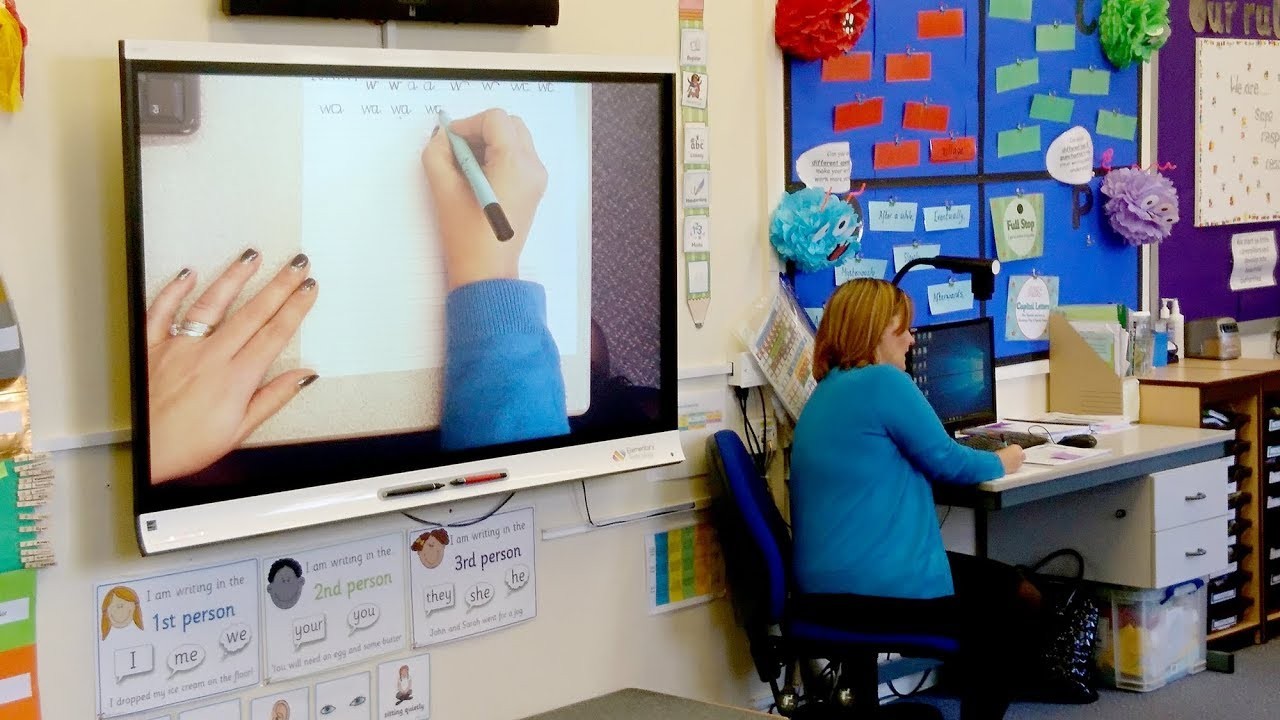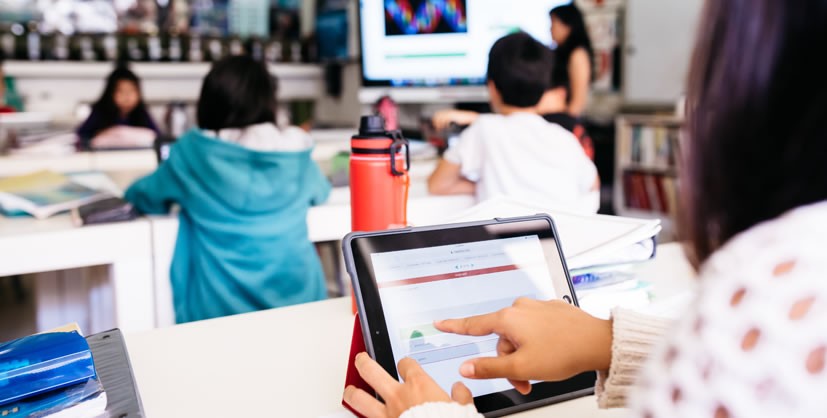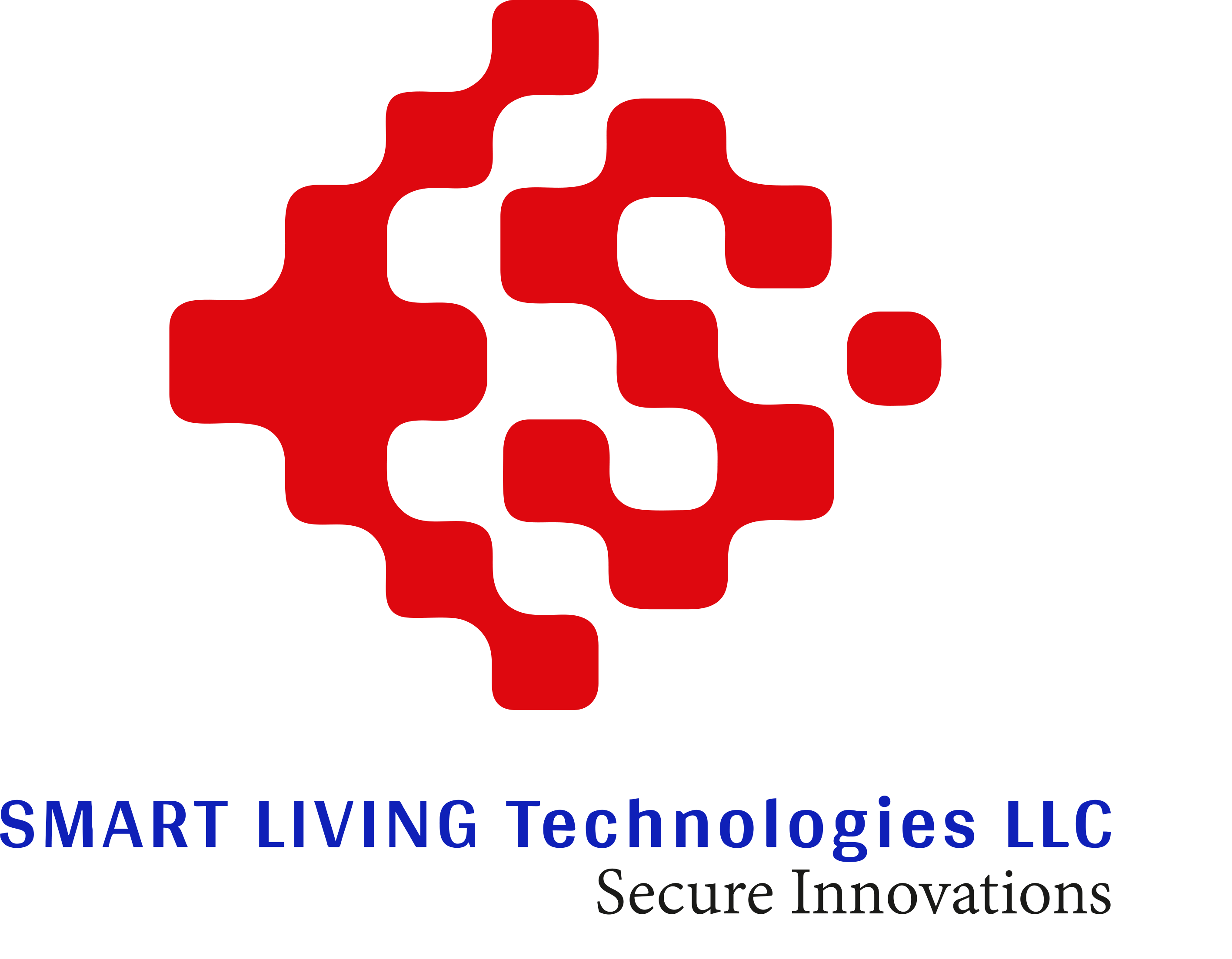Smart Education Solutions

Like you, we believe better outcomes are possible
Today’s goals shape tomorrow’s actions, which is why the goals of intelligent schools are forward-thinking and aligned with the era of information and communication technology (ICT). These schools focus on the holistic development of students, addressing their physical, mental, emotional, and psychological growth. Since no two people are identical, it’s essential to avoid a one-size-fits-all approach in education. Intelligent schools are designed to recognize and nurture each student’s unique abilities, allowing them to excel in areas they are passionate about. A central objective of intelligent school systems is to encourage active participation from students. This involvement helps them overcome their fears and build confidence in expressing their opinions, ultimately preparing them for the challenges of the outside world.
The necessity of transitioning from traditional and e-learning to smart education is critical to meet the new demands of the smart economy and smart society. This shift aims to achieve quality training for specialists. Smart universities have several key properties, such as flexibility in learning within an interactive educational environment, free access to global content, and the personalization and adaptation of learning. These elements are crucial for creating a more tailored and effective educational experience.
To adapt education systems to the individual capabilities and knowledge levels of students, it’s important to measure specific metrics, such as initial and final knowledge levels, and allow students to choose personalized educational trajectories. This could include forming an electronic portfolio to track progress and analyze the efficiency of the chosen educational path. By aligning course content with students’ personal results and qualities, smart education empowers them to realize their full potential.
The integration of smart technologies in education not only enhances the learning experience but also emphasizes continuous quality improvement. This involves harmonizing quality management principles to achieve, maintain, and improve the general and professional knowledge of students. Smart education fosters a culture of continuous improvement throughout the educational process.
At SMART Living LLC, we are dedicated to helping educators open up more pathways for students to learn, allowing them to develop the skills they need to succeed and unlock their unique potential. By providing smart education solutions, we empower both educators and students to thrive in an increasingly digital world.
Significant aspects of our technology-rich learning classroom solutions include

Smart Learning Classroom
Standard smart classrooms are teacher-led spaces that typically include a computer, interactive whiteboard, and projector. Like traditional classrooms, teachers lead the lessons, but smart technologies give students more opportunities to engage with the content, the teacher, and one another. A smart classroom helps students process information, gain background knowledge, and turn their learning into practical outcomes.
Various assessments are integrated into the smart classroom process, helping students develop intentional and advanced learning. A virtual classroom can also be considered a “smart class.” Smart classrooms in Malaysia are designed to replicate the features of traditional classrooms while incorporating smart technologies.
These are the elements or characteristics of a smart classroom
The essential equipment for a smart classroom includes:
- Hardware Equipment (Desktops, laptops, tablets, iPads)
- LCD projectors
- DVD/VCR Combo
- Interactive Whiteboards
- Microphones
A must-have set of smart classroom tools includes:
- Learning Management System
- Interactive Control Center
- Class Pad
- Interactive Whiteboards
- Classroom Control System
- Response Pad
- On-Demand Collaboration
- On-Demand Visual Learning
- Classroom Capture
- Interactive Displays
To set up a functional digital classroom, you need a reliable smart classroom solution provider in Dubai who understands both the advantages and characteristics of a smart classroom.
Smart Living LLC’s smart classroom solution provides a wide range of highly interoperable technologies designed to meet the demands of a digital classroom.
Our Smart Learning Classroom solutions allow you to create a personalized, secure, and interactive learning experience. This enhances engagement, stimulates interactivity and collaboration, and fosters creativity and learning across the curriculum.


Visualizer
Visualizers are becoming essential tools in classrooms, increasingly seen as crucial for teaching and learning. A visualizer functions like a webcam connected to a whiteboard or projector, allowing you to display content to the entire class via a large screen. It can be used to show lessons live on the projector or as a high-tech replacement for an overhead projector to display text, images, and objects. Visualizers are especially effective when displaying 3D models and specimens.
As a fundamental piece of equipment, visualizers are perfect for demonstrating and recording practical activities, techniques, processes, and materials. They can be utilized across most, if not all, subjects. Teachers can model, demonstrate, give live feedback, mark, record, and time-lapse lessons quickly and easily for the whole class.
An essential tool for modern education, visualizers have been tried and tested by teachers across all subjects. They are easy to use, with fast, accessible training available for all features, making them perfect for any lesson. Sharing best practices and resources across schools makes it an excellent purchase for an entire institution.
The visualizer can even be used across campuses to share live videos and experiments with other schools. Many teachers in English, Math, Science, D&T, and Art are now using visualizers daily, but any subject, including RE, business studies, and even sports theory, can benefit from its features.
When adopted and used effectively, visualizers can be incredibly beneficial, helping students maximize their learning and improve engagement across various subjects and lessons.
A visualizer is an invaluable tool for teaching various subjects across the entire school. Here’s why it’s essential for effective teaching:
Share Live Videos and Experiments: Perfect for detailed and intricate work, the visualizer allows teachers to create or demonstrate in real-time, with all students able to observe and learn from their desks.
Record Time-Lapse Videos: Teachers can film processes over several days and then walk students through the progression, helping them understand each stage as part of the overall process.
Whole Class Display: A range of items can be displayed, such as maps, electronic circuits, song lyrics, x-rays, delicate objects, artwork, fine print, and books for collective reading. The possibilities are endless.
Modelling: Visualizers are excellent for showcasing and modeling skills, from problem-solving to demonstrating processes like letter formation, diagram annotation, answering exam questions, reading thermometers, or counting objects. Any skill or process that can be modeled is enhanced with a visualizer.
Zoom In on Key Elements: The visualizer allows teachers to zoom in on important aspects of materials, techniques, or processes, giving students a clearer view of essential details.
Film Practical Work: Whether it’s demonstrating drawing techniques, measuring angles, or bringing a book to life, visualizers help film practical activities in a way that’s easy for students to follow.
Demonstrate and Explain: Teachers can use the visualizer to present lessons, while students can also use it for “show and tell,” promoting peer and self-assessment.
Live Feedback: The visualizer helps save time by providing instant feedback, avoiding the need for teachers to re-mark the same mistakes multiple times.
Capture and Store Images and Videos: Teachers can easily capture images and videos, which can then be digitally stored for future reference, analysis, or assessment.
Analysis: The visualizer supports analysis by allowing teachers and students to examine what happened, why it occurred, and how improvements can be made.
Enhanced Learning
A fire hose reel cabinet is designed to protect the fire hose reel from contamination and damage. It is typically mounted on the surface or recessed within a wall, offering a compact design that saves space and ensures easy access for operation.
Fire hose reels are strategically placed to provide a readily accessible and controlled water supply, essential for combating potential fire risks.
Cognitive Load Theory focuses on the limitations of working memory and how excessive information can overwhelm students, slowing or halting their learning. When students are bombarded with irrelevant information, it can fill their working memory, causing them to remember the unimportant details rather than the core concepts. This is referred to as the Redundancy Effect.
The visualizer helps alleviate this issue by eliminating unnecessary information, which often clutters presentations such as PowerPoint slides. This allows teachers to focus on delivering key learning points, ensuring that the essential information is prioritized over irrelevant details. This structured and focused teaching approach aids students in better absorbing and transferring information into long-term memory, making it easier for them to recall when needed.
By incorporating visualizers, Smart Living LLC also supports the development of metacognitive learning. Teachers can clearly demonstrate concepts in real-time, fostering problem-solving and encouraging students to engage with the material actively. This method helps students internalize not only the subject matter but also the strategies for approaching similar problems, ultimately enhancing their ability to transfer knowledge to new challenges.
Addressing all learning methods
There are various learning styles, and every student may lean towards a specific style or a combination of them. Below are suggestions on how each learning style can be enhanced using the visualizer, offered by Smart Living LLC, to create a more interactive and engaging learning environment.
Kinesthetic Learners
Kinesthetic learners thrive on hands-on experiences and learn best through touch and physical engagement. The visualizer offers the perfect technology to enhance their learning. These learners will benefit from participating in experiments and practical activities, with teachers using the visualizer to demonstrate these tasks. After demonstrating, students can replicate the activity while the class watches, reinforcing learning through active participation. The live recording and modeling features help these students visualize processes in real-time. Teachers can also ask students to perform the experiments using the visualizer and invite feedback from the class, encouraging collaboration and further hands-on practice.
Outdoor activities are another excellent stimulus for kinesthetic learners. Teachers can assign research or gathering tasks outdoors, then use the visualizer to analyze the findings and share them with the class.
Visual Learners
Visual learners absorb information best through images, pictures, and visual representation. The visualizer is an ideal tool for visual learners as it helps them visualize subjects like art, science experiments, or even simple activities such as using a ruler. Time-lapse recordings and live demonstrations allow these learners to revisit visual content easily for revision or group discussions. By leveraging the visualizer, these learners can more effectively grasp concepts through the power of visualization.
Audio Learners
Audio learners excel in absorbing information through sound and music. For this group, the visualizer can enhance teaching by enabling clear, precise, and vocal demonstrations. Video recordings allow these learners to revisit lessons and absorb content through sound repeatedly, reinforcing their understanding. Teachers can incorporate both visual and auditory elements to provide a well-rounded learning experience for audio learners.
Reading/writing Learners
For learners who favor reading and writing as their primary mode of learning, the visualizer can emphasize writing and reading while demonstrating key concepts. Teachers can use the visualizer to show written content, analyze texts, and demonstrate writing techniques, allowing students to write down their thoughts, findings, and feedback during lessons. The visualizer can also be used to display textbooks and explain material in real-time, making it a powerful tool for reading and writing exercises. Additionally, recorded content can be revisited for further review or shared with other classes.
Types of Pumps Used in Fire Protection Systems
In fire protection systems, pumps play a crucial role in ensuring a steady and reliable supply of water to combat fires. There are two main categories of pumps: Positive Displacement Pumps and Centrifugal Pumps. Let’s explore both types in more detail:
1. Positive Displacement Pumps
Positive displacement pumps work by capturing a fixed volume of water per revolution and then pushing it out through the discharge line. These pumps are well-known for creating high pressures, but they have a limited flow volume when compared to centrifugal pumps. They are typically used in specialized applications, such as water mist and foam-water systems.
- Example: A common example of a positive displacement pump is a bicycle tire pump, where air is captured in discrete volumes and pushed out.
- Advantages: They generate high pressure and are useful in applications where high pressure is required.
- Limitations: They are not as commonly used in fire protection systems due to their specialized nature, and they typically have limited flow capacity.
2. Centrifugal Pumps
Centrifugal pumps are by far the most commonly used pumps in fire protection systems. They generate pressure primarily through centrifugal force or spinning. Here’s how they work:
- Water enters the pump through the suction inlet and moves toward the center of the impeller.
- The impeller rotates rapidly, driving the water outward toward the pump’s rim, where it is discharged at high pressure.
Centrifugal pumps are ideal for handling large volumes of water while providing significant pressure boosts. They are used in most fire protection systems due to their efficiency in delivering water quickly and consistently.
Different Configurations of Centrifugal Pumps
Several configurations of centrifugal pumps are available, each designed to meet different needs. Some common types include:
1. Horizontal Split-Case Pump
- Design: The pump housing is split horizontally, allowing access for maintenance. The water flow is directed into the impeller from opposite sides.
- Advantages:
- Reliable and easy to maintain due to the accessible split-case design.
- Can be used with both electric and diesel drivers.
- Available in various rated flow and pressure capacities.
- Limitations: Requires more space compared to other pump types.
2. Vertical Turbine Pump
- Design: A vertical turbine pump is designed to be used in conditions where the water source is below grade, such as from a river or subgrade tank.
- Advantages:
- NFPA 20 compliant: This is the only pump type allowed by the National Fire Protection Association (NFPA) 20 for starting with negative suction pressure or taking water from a lift condition.
- Ideal for raw water sources such as ponds, lakes, and rivers.
- Versatile in terms of flow capacities and pressure levels.
- Can be powered by either electric or diesel drivers.
- Limitations: Typically used for more specific applications where water sources are below ground level.

Interactive Learning Experiences
Interactive learning is a hands-on approach that helps students engage more effectively and retain information better. Whether or not technology is used, interactive learning aids in strengthening problem-solving and critical thinking skills. This concept is essentially a form of eLearning, combining traditional methods with technology. Research shows that a blended learning approach—whether online or in-person—can enhance productivity by helping learners retain knowledge and improve problem-solving abilities over time.
This blend of benefits arises from learning in a responsive, engaging, and interactive environment. While it’s essential to have fun at work, the real value is in how increased productivity in the workplace leads to greater profits for businesses. Additionally, interactive learning fosters employee motivation by maintaining communication with instructors. This can reduce attrition rates by dispelling the monotony often associated with traditional classroom settings.
Four Key Interactive Elements Essential in eLearning
A major challenge faced by employers and educators is maintaining learner engagement and attention in eLearning courses. The lack of in-person interaction is a significant contributor to this issue. When learning remotely, it’s harder to gauge how learners interact with content and what their experiences are. So, how can we address this challenge? Interactivity could be a valuable solution.
Interactive online courses offer learners the opportunity to engage with content in multiple forms, boosting learner engagement. This engagement motivates learners to use critical thinking and problem-solving skills, resulting in better knowledge retention. Furthermore, it helps learners apply what they’ve learned even after completing the course. Quizzes, gamification, videos, and virtual classrooms are essential elements to incorporate into online learning modules.
Quizzes and Learning Assessments
Falling short in quizzes isn’t always a bad thing—it can improve learning outcomes. Quizzes and assessments help measure a learner’s performance, reinforce key concepts, and provide valuable feedback. By including a variety of formats—multiple choice, true/false, fill-in-the-blank, or short-answer questions—quizzes become more engaging. You can even embed multimedia into questions for a more interactive experience.
Gamification
Incorporating games into eLearning is a fun way to engage learners. Gamification motivates remote learners by encouraging them to perform without realizing it. Similar to a video game, gamification attributes help learners explore concepts while receiving rewards and recognition based on their progress through different levels of the course.
Scenario-Based Questions
Scenario-based questions immerse learners by presenting real-life examples and situations. These scenarios can simulate work environments, providing learners with practical knowledge that relates directly to their roles. By making decisions within these scenarios, learners build awareness and experience realistic problem-solving.
Videos
With the popularity of social media, incorporating videos into the eLearning process is highly effective. Videos make content more dynamic and engage learners actively. To further personalize the experience, videos can include overlays, voiceovers, quizzes, or user interactions to enhance engagement and deepen understanding.
When designing an interactive eLearning course, consider which existing elements work best for your learners and which new ones can bring additional benefits.
Smart Living LLC is a world leader in interactive technology, offering SMART Interactive Displays that are easy to use, deploy, and support. SMART Board® interactive displays provide unmatched value and functionality, making them a solid investment in dynamic, collaborative learning. Choose from a range of models designed to meet the needs of every teacher, student, learning environment, and budget.
State-of-the-Art-Auditorium
A fire hose reel cabinet is designed to protect the fire hose reel from contamination and damage. It can be surface or recess mounted into a wall, featuring a compact design that saves space and ensures easy access for operation.
Fire hose reels are strategically placed to offer a readily accessible and controlled water supply to address potential fire hazards effectively.

Today, every institute, college, and school requires an advanced, well-equipped auditorium to host their annual functions, special assemblies, and inter-school competitions. These auditoriums must be outfitted with state-of-the-art equipment to facilitate interactions across large audiences. At Smart Living LLC, we integrate your auditoriums with large venue presentation facilities tailored to the specific application and audience, ensuring that every visual and audio element is exceptional, intelligent, and easy to control. Our cutting-edge solutions, including high-definition flat-screen displays, projectors, digital audio systems, and automated lighting, bring excitement and engagement to your auditorium, creating a dynamic environment for your audience. We help you craft impactful settings for information delivery, event support, training, and more, giving your institution a competitive technological edge.
Digital Conference Hall
Smart Living LLC offers seamless technology that makes setting up a flawless presentation environment as simple as the touch of a button. Our solutions allow instant adjustments to lighting, shades, media settings, and more, ensuring that your meeting space is always ready to captivate your audience—whether it’s a conference room, classroom, or auditorium. Smart Living LLC takes the hassle out of meetings, making your events unforgettable.
- Effortlessly start a video conference with no hassles
- AV solutions with audio-video processors
- One-touch access to room lights, shades, thermostat, and AV presentation controls
Digital Auditoriums
Smart Living LLC provides comprehensive auditorium solutions to set the stage for unforgettable events. Our AV distribution systems, multimedia processors, lighting, and HVAC controls work seamlessly together to create the perfect environment for any audience size. Whether it’s a conference, keynote, convocation, or any other event, your space will benefit from our reliable, integrated system features.
- Interactive touch screens
- Projection systems
- PA systems with mixers and processors
- Acoustic consultancy
